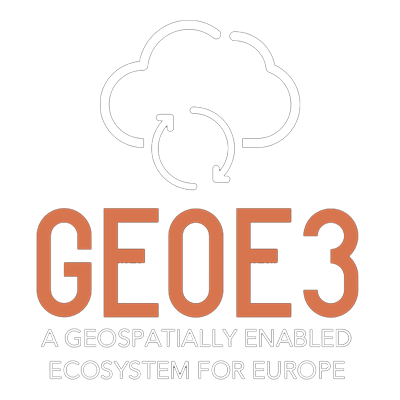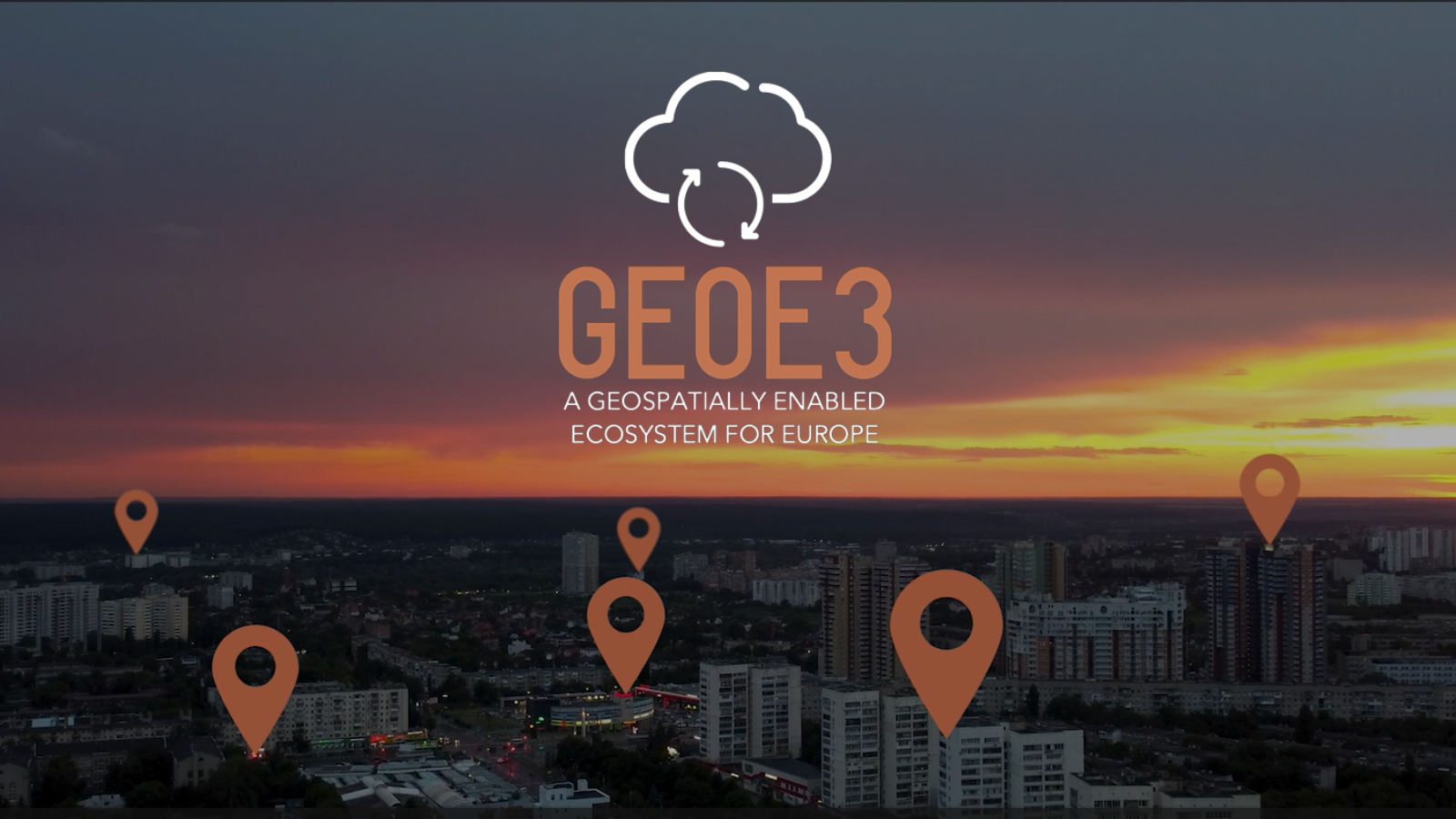The Geospatial Enabled Ecosystem for Europe (GeoE3) project finished at the end of February 2024 after three and a half years. With a high-level consortium of leading national mapping and cadastral agencies, the project made a significant contribution to Europe’s digital transformation by providing collaborative solutions to the challenges facing Europe.
Environmental phenomena such as acidification, deforestation, flooding and other effects of global warming do not respect national borders, languages or administrative organisations. Especially in Europe, the monitoring of these environmental phenomena requires the establishment of internationally interoperable frameworks that allow cross-border geospatial data to be more easily combined with other information sources.
This was the need that the GeoE3 project set out to address. One of the tools created in the project is the Location Europe Platform, where information can be shared across borders.
“The significant achievement is that we can now demonstrate the content integration, which allows users to explore and visualise key climate, meteorological and environmental indicators. For instance, climate indicators can be integrated directly with individual buildings,” says Project Manager Antti Jakobsson from the National Land Survey of Finland.
Tools for smarter and greener cities
GEOE3 has enhanced the integration of geospatial data with statistical and tabular information, amplifying its specificity and accessibility across diverse applications. This synergy has streamlined the analysis of UN Sustainable Development Goals and associated geospatial indicators, advancing UN climate policy objectives.
The project focused on key use cases: solar energy potential, energy efficiency of buildings, smart cities and electric cars. The project showed how solar energy potential can be evaluated using 3D buildings with roof structures and a digital surface model. This provides the basis for planning where solar panels can be placed.
“We know that buildings cause 36 % of the Co2 emissions in Europe. The 3D building information used together with country specific simulation database provides a possibility to estimate energy efficiency of buildings for whole Europe. Smart cities and smart countries need to be connected and our platform provides means to do that. We also showcased how electric cars can utilize climate and location information to assist driver in the decision making process,” Jakobsson says.
Best practices shared through the Location Innovation Academy
The Location Innovation Academy is an e-learning platform, where knowledge from the project is shared to help replicate the applications in other use cases.
The Academy offers e-learning modules to help government agencies, especially national mapping organisations, to make the most of their existing geospatial platforms. It also helps to create an ecosystem of generic services that can connect different datasets and services with geospatial data.
The courses are available in English and in Spanish. The Academy has already attracted more than 700 registered users.
The work continues
GeoE3 has helped improve Europe’s shared data spaces by making it easier to find relevant data and improving services through the use of the latest standards and APIs.
“We have now demonstrated how data and data services in Europe can be more accessible, interoperable and available, but the work needs to continue together. We encourage all European mapping agencies to join our network so that together we can drive Europe’s spatial data ecosystem forward”, says Antti Jakobsson.
The work carried out in GeoE3 will continue in the Location Innovation Hub, which is now coordinating the Location Europe platform and the network of data producers.
More information
Antti Jakobsson, project manager, antti.jakobsson@nls.fi
Watch this video to learn more about the results of the GeoE3 project.
Links
- Study in the Location Innovation Academy: academy.ogc.org
- Explore the Location Europe platform: locationeurope.eu
- The demo video showcases how national data can be made available in a coherent way through the Location Europe platform. Watch the video on Youtube.
- See also the videos from Spain, Estonia and Finland.
- Would you like to test the Location Europe platform and its data? Read more about how to get your free API key
- Does your organisation want to share its data on the platform? Read more about joining the European Core data provider network
GeoE3 in a nutshell
- Geospatially Enabled Ecosystem for Europe, GeoE3, was a project that aimed to improve data availability, interoperability and harmonisation and to build an information ecosystem based on national platforms.
- The project was co-financed by the Connecting Europe Facility of the European Union.
- The GeoE3 involved 12 partners in total: National Land Survey of Finland, Finnish Meteorological Institute, Statistics Finland, Spatineo, Norwegian Mapping Authority, The Netherlands’ Cadastre, Land Registry and Mapping Agency, Open Geospatial Consortium (OGC), Centro Nacional De Información Geográfica, Estonian Land Board, Information Technology Center of the Ministry of the Environment Estonia, Aventi Intelligent Communication, and Direccion General Del Catastro.

